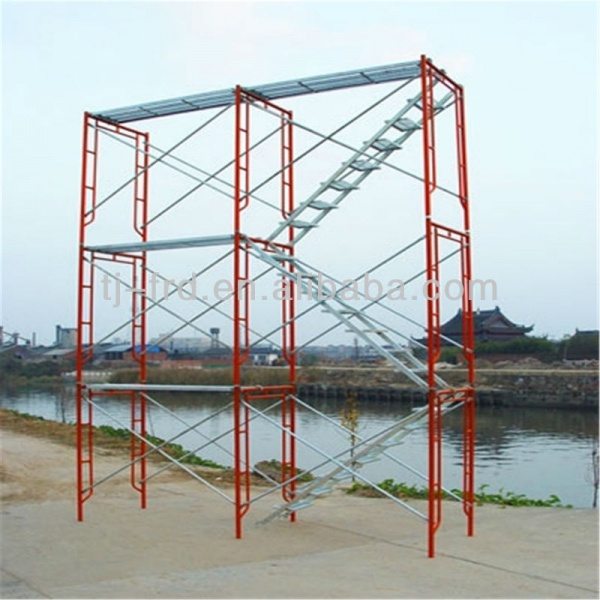Scaffolding Training: Enhancing Abilities for Safety And Security and Efficiency
Scaffolding training is necessary for construction workers' safety and performance. It furnishes them with skills to identify dangers, collaborate efficiently, and accomplish efficiency. The training focuses on useful strategies for putting up and modifying scaffolding, stressing safety devices usage and emergency treatments. By buying this training, companies preserve secure workplace and boost work standards. The next areas will certainly offer more insights right into the crucial skills instructed, precaution, effectiveness benefits, and applying training programs.
Relevance of Scaffolding Educating
Scaffolding training plays an important duty in making sure the safety and efficiency of construction employees at work sites. Ability advancement is a crucial facet of this training, as it furnishes workers with the necessary expertise and capabilities to put up, take apart, and service scaffolding structures securely.
Without appropriate training, workers might lack the abilities required to determine prospective hazards, use equipment appropriately, and comply with safety and security protocols, placing themselves and others at risk. Workplace safety is a leading priority in the building market, making scaffolding training a crucial investment for business wanting to keep a protected workplace.
Trick Abilities Instructed in Training
A vital component of scaffolding training includes conveying employees with the vital skills required to browse building sites safely and efficiently. Practical methods and hands-on technique are key aspects of the training curriculum. Workers are educated exactly how to set up, take apart, and change scaffolding frameworks utilizing industry-approved approaches. Through hands-on practice, they find out to recognize possible hazards, make use of safety devices correctly, and guarantee the stability of the scaffolding.
Moreover, team collaboration and communication skills are stressed throughout training sessions. Scaffolders are educated to function efficiently in teams, collaborating their efforts to enhance productivity while keeping safety and security standards. Communication skills are vital for sharing vital info concerning tasks, security procedures, and prospective dangers on the construction website. Scaffolders are instructed to connect plainly and concisely with employee, supervisors, and other tradespeople to make sure a smooth operations and stop crashes. By sharpening these essential abilities, employees come to be proficient in scaffold assembly and upkeep, adding to a more secure and a lot more efficient work environment.
Precaution and Methods
Employees in scaffolding training are presented to an extensive set of safety measures and protocols designed to make certain a secure workplace on building and construction sites. Safety and security equipment plays a crucial function in ensuring the wellness of employees at elevated elevations. This includes harnesses, safety helmets, gloves, and non-slip shoes, every one of which are important for stopping accidents and injuries.
In addition to the appropriate use of security tools, workers are learnt emergency treatments to be followed in instance of accidents or hazardous situations. Emergency situation procedures cover methods for replying to cases such as falls, scaffold collapse, or unfavorable weather conditions. It is necessary for workers to be well-versed in these treatments to act quickly and effectively in emergency situation circumstances.
Efficiency Advantages in Construction
Enhancing efficiency with structured procedures and maximized workflows is a vital emphasis in maximizing effectiveness advantages within the building sector. By carrying out efficient methods, construction companies can significantly increase productivity degrees. One way this is attained is by decreasing downtime via efficient planning and scheduling of jobs. This guarantees that employees are continuously participated in effective tasks, bring about boosted outcome without endangering high quality.
Furthermore, maximizing operations can result in significant price savings for building projects. Reliable use of resources, such as products and tools, decreases waste and minimizes unnecessary expenditures. In addition, enhanced effectiveness typically results in faster task completion times, enabling firms to reduce labor costs and possibly take on more projects within the exact same duration.
Applying Educating Programs
With the fast innovations in construction innovations and security regulations, the implementation of detailed training programs has come to be essential for ensuring the competency and security of employees on building and construction sites. Training strategies and implementation techniques play a vital role in furnishing workers with the essential skills to perform their jobs efficiently and safely.
To boost skill advancement, training programs ought to include hands-on practice, simulations, and interactive sessions to mimic real-life scaffolding circumstances. Additionally, utilizing a selection of evaluation methods such as created examinations, sensible examinations, and on-site observations can assist gauge the efficiency of the training and recognize locations for improvement.
Applying an all-round training program that covers not just the technical aspects of scaffolding but additionally highlights security methods and run the risk of monitoring is vital for preparing employees to handle the challenges they may experience on building and construction websites. By prioritizing extensive training programs, building and construction business can promote a society of safety and security, effectiveness, and continuous knowing amongst their labor force.
Scaffolding Qualification Refine
The scaffolding accreditation procedure is essential for making certain that workers meet the required security requirements.
This process typically includes: - an overview of certification requirements, - a comprehensive training program covering important topics, and - a last exam incorporated with a sensible assessment.
Recognizing the parts of this qualification process is essential in maintaining a secure and reliable workplace.
Certification Needs Overview
Effective completion of the scaffolding certification process is a mandatory step for people seeking to work in the building and construction market. To meet market requirements, qualification demands normally include:
- Understanding of scaffold kinds and uses
- Expertise of safety guidelines and treatments
- Proficiency in setting up and disassembly strategies
- Familiarity with load capacities and weight distribution
- Ability to evaluate and keep scaffolding devices
Fulfilling these qualification requirements guarantees that employees have the required abilities and understanding to operate scaffolding securely and effectively on building and construction websites, lowering the risk of mishaps and improving overall productivity.
Training Period and Content
Throughout the scaffolding certification process, candidates undertake extensive training sessions to acquire essential abilities and understanding needed for risk-free and efficient scaffold operation. The training intensity is made to cover a wide range of subjects, including security laws, devices handling, setting up, and dismantling procedures.
Analysis techniques such as functional presentations, written examinations, and hands-on exercises are made use of to evaluate the candidates' understanding and effectiveness. Customized components are tailored to attend to particular requirements and difficulties, making sure that trainees receive detailed guideline relevant to their duties.
Practical application workouts play an essential duty in strengthening academic understanding, allowing prospects to use learned principles in real-world situations. By incorporating academic learning with hands-on method, the training outfits individuals with the required proficiency to excel in scaffold operations.
Test and Practical Assessment
To evaluate prospects' proficiency in scaffold procedure, a comprehensive test and useful evaluation are integral components of the scaffolding certification process. The exam evaluates the theoretical knowledge of scaffold safety and security policies, assembly treatments, and risk recognition. Additionally, the practical demo evaluates prospects' capability to construct, take apart, and examine scaffolds appropriately.
The mix of both elements guarantees that certified people possess the necessary abilities and comprehending to function safely and effectively with scaffolding systems. The functional analysis allows prospects to showcase their hands-on capacities, while the expertise assessment examinations their understanding of vital concepts. Together, these evaluations ensure a complete evaluation of candidates' preparedness to work in scaffolding operations.
- Theoretical expertise evaluation
- Practical presentation assessment
- Scaffold setting up and taking down analysis
- Threat identification and reduction assessment

- Evaluation procedures understanding verification
Often Asked Concerns
What Are the Common Challenges Encountered by Employees Throughout Scaffolding Training?
During scaffolding training, obstacles encountered by employees might include lack of experience, concern of heights, and not enough understanding of security treatments. Solutions entail complete training programs, hands-on method, and continual support to ensure proficiency and self-confidence.
Exactly How Does Scaffolding Training Influence Office Society and Communication Amongst Building Groups?
Enhanced workplace society and interaction among construction teams are significant end results of scaffolding training. Boosted team effort stems from shared understanding of safety methods, resulting in enhanced efficiency and minimized risks on building sites.
Can Scaffolding Training Help In Reducing the Number of Work Environment Accidents and Injuries in the Building And Construction Market?
Improving office safety via thorough scaffolding training can substantially decrease the variety of workplace crashes and injuries in the building sector. By improving skills and knowledge, employees can run a lot more effectively, ensuring a more secure workplace.
Exist Any Particular Regulations or Rules Concerning Scaffolding Training That Employers Need to Be Familiar with?
Employers have to stick to regulative demands and compliance requirements when it involves scaffolding training. Particular legislations determine the required training protocols to assure the safety and performance of workers in the construction industry.
How Does Scaffolding Training Differ for Different Sorts Of Construction Jobs, Such as Residential Vs. Commercial Structures?
Scaffolding training varies between property and industrial jobs as a result of the unique precaution, strategies, and equipment needs. Residential projects commonly include smaller sized structures and less complex configurations, while commercial structures require extra complex systems and adherence to rigorous safety and security protocols.
Conclusion
In summary, scaffolding training plays a vital duty in boosting abilities for safety and effectiveness in construction tasks.

By focusing on essential skills, safety measures, and methods, workers can better comprehend the importance of proper scaffolding strategies.
Carrying out training programs and obtaining certification can considerably improve the total performance and efficiency of building and construction tasks.
It is essential for employees to constantly upgrade their abilities and expertise through training to ensure a risk-free and reliable workplace.
